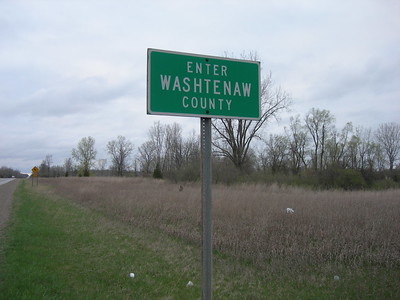Earlier this month, the US Census Bureau released long-awaited population data from last year’s decennial census. Michigan, as a whole, actually gained population: 2% over the past decade. That puts Michigan over the 10M mark in terms of residents, but that’s not likely enough to prevent the state from losing representation in Congress. Nearly as predicted, Washtenaw County grew by 8%. I t joined a select number of counties whose population growth exceeded the US population growth rate of 7.4%. Ottawa, Grand Traverse, Kent and Allegan counties also eclipsed the national growth rate.
Within Washtenaw County, Salem Township (24.7%), Lima Township (21.7%), Saline Township (20.1%), Sylvan Township (16.9%), Superior Township (13.6%), Pittsfield Township (12.6%), Dexter Township (10.8%), Dexter Village (10.6%), Chelsea (10.6%), Ann Arbor (8.7%), Barton Hills (7.5%), Ann Arbor Township (7.2%), Lodi Township (5.9%), Augusta Township (5%), Ypsilanti (6.2%), York Township (4.6%), Sharon Township (4.6%), Ypsilanti Township (4.3%), Milan (4.2%), Northfield Township (3.7%), Saline city (1.6%), and Manchester Township (1.2%) all gained population.
Scio Township (-12.6%), Freedom Township (-6.7%), Bridgewater Township (-3.5%), Webster Township (-3.1%), Manchester Village (-2.6%), Augusta village (-2.4%), Lyndon Township (-2.4%) all lost population.
The takeaway here is that Washtenaw County saw distributed population growth. In the preceding decade, Washtenaw County gained 27,467 residents, of which 9,917 were in the City of Ann Arbor. That means nearly two-thirds of Washtenaw County’s population growth occurred outside the city limits. Further, the number of persons under the age of 18 residing in Washtenaw County was 68,324. (The 18+ population was 302,544.)
Washtenaw County growth, poverty exceed national averages
The WCC Administration has done a lot of handwringing about the drop in the school-age population in Washtenaw County. The good news for WCC is that everyone in the county over about the age of 16, is WCC’s school-age population. WCC deals mostly with adult learners, many of whom are not fresh out of high school.
The handwringing is important because the WCC administration and certain Trustees want to use the drop in the high school population to justify diverting millions of dollars from occupational, technical, vocational and transfer education to non-academic, revenue-generating pursuits. This is not the time to take money away from education. WCC cannot both meet the needs of its students and play games with useless buildings that the college won’t maintain.
EVP of Instruction Dr. Kim Hurns stated that WCC was in a rich community. She was talking about Washtenaw County’s money. I would say that if Washtenaw County is a rich community, it’s rich in educational opportunities. We also have residents who are generous with educational dollars.
Washtenaw County’s growth rate exceeds the national average, but growth isn’t the only national average we exceed here. Washtenaw County’s poverty rate also exceeds the national average.
While WCC administrators who drive into work from Wayne, Oakland and Macomb counties see only a pile of money that they could use to fund their own misguided priorities, I see a large number of impoverished residents whose futures are being quietly pissed away on hotels, conference centers and mixed-use development.
We deserve a community college administration that is focused on the educational and economic needs of Washtenaw County. Frankly, there’s a lot of (real) work to be done here.
Photo Credit: Jimmy Emerson, DVM , via Flickr
























